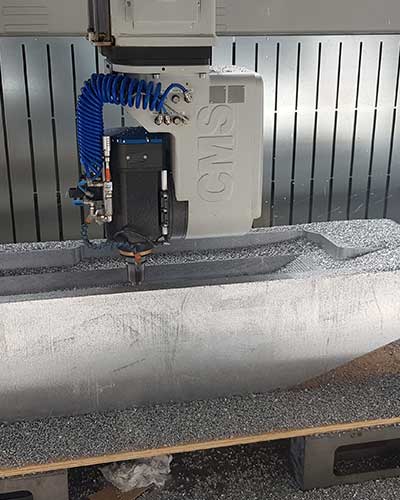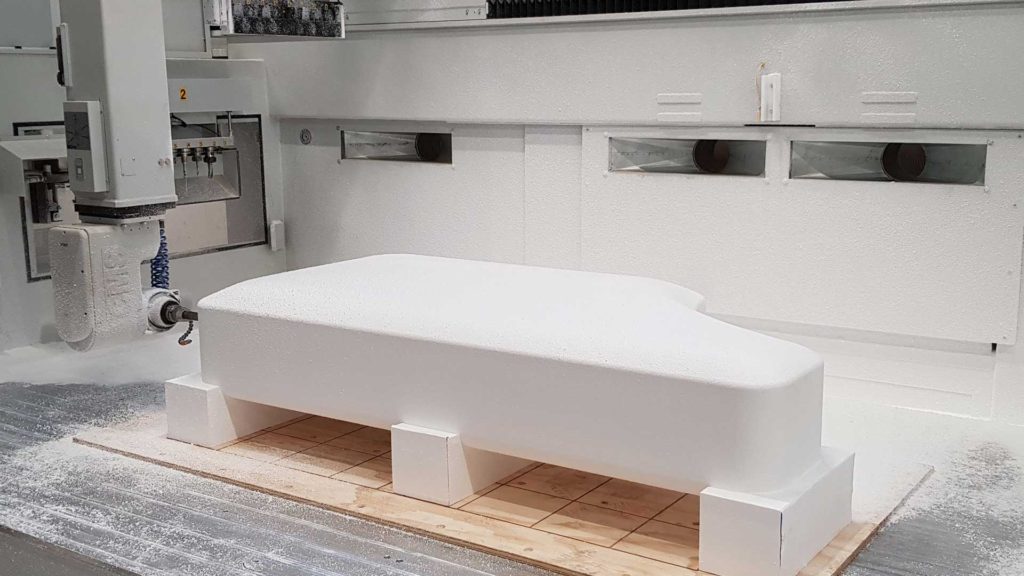Thermoforming Our Specialty
Models and Prototypes Manufacturing in the Thermoforming Process

The design of patterns, prototypes, and models represents the first step for any thermoforming production process. The model serves as a test for the ultimate mold, the one that will be used to shape the workpiece through vacuum forming: for it has to accurately reproduce the final piece, the design and the building of the mold is a crucial step in the economy of the whole manufacturing process. That’s why we often go for a temporary model before getting to actual production.
Models can be made of wood, resins, or aluminum, depending on the particular processing needs.
There might be the need to produce some kind of prototype before starting the actual production process, even though sometimes it is possible to skip this step and go directly for machine working.
We can build models and molds up to 4800/2600/1200 mm, maintaining high-quality finishing standards.
New modeling techniques
While it’s relatively simple to get high-quality CNC machinery at affordable costs, the development and improvement of new modeling and prototyping machines are only recently making them quite accessible and easier to manage.
Rapid prototyping and 3D printing brought a radical change in model design and construction: while allowing a previously unimaginable level of detail, this kind of technology has always decreased manufacturing times and costs.
Models in thermoforming: features and function
In the thermoforming manufacturing process, the model has to be placed on the molding machine together with the sheet of plastic material, which will become the final workpiece after the application of vacuum forming.
As said before, there might be a need for a temporary model for testing. After decades of expertise in the thermoforming industry, we came to the conclusion that wood models are the best option for testing and adjusting the final product.
In fact, wood processing allows multiple testing and finishing operations, which are essential to produce a perfect definitive mold for machining.
Aluminum and resin molds provide better accuracy than wooden ones, though. Hence, the model material’s choice needs to come after an accurate analysis of the product features and the final characteristics required for a perfect result.
Rapid prototyping: a brief history
The first stereolithography machines were used to create models starting from a liquid resin that was polymerized and solidified by a special laser beam: the piece was built in layers.
As this kind of technology evolved, different kinds of stereolithography machines came up: some of them can polymerize resin powder, others are working synthesizing metal powders, still others use sands and resins to directly build foundry models ready for final manufacturing. Materials are evolving, too: models can be made of metal, rubber, different types of plastic materials, sand, biodegradable materials, and so on.
Rapid prototyping involves a series of increasingly popular machines: 3D printers can realize models settling, layer upon layer, a melted plastic wire, which often presents different mechanical features.
The deployment and improvement of open-source 3D printing hardware and software allowed the market uptake of relatively cheap and manageable machines, generating some sort of trend. Even though user-friendly and small 3D printers cannot suit professional use, the development and the improvement of 3D printing technology opens a window onto further possible developments in professional use too.
In our factory, the model design and production occur within a specific modeling department, which constantly evolves according to the latest innovations. Looking forward to directly managing and controlling the whole model design process, we’re working on a brand new 3D printing machine capable of handling large workpieces and new plastic materials. This new machine will allow creative use of 3D printing as a part of the manufacturing process.

